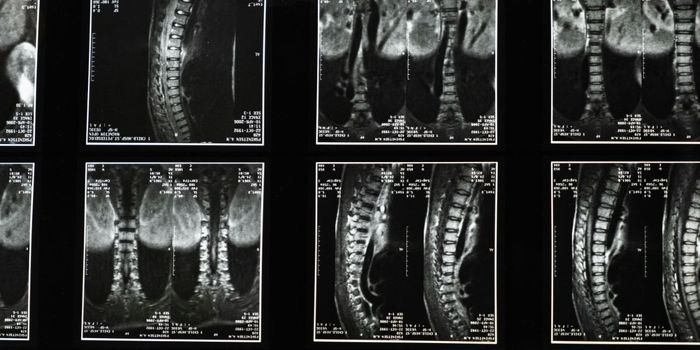'Dancing' Molecules Promote Cartilage Regeneration Within a Few Days
A few years ago, researchers developed a novel treatment that seemed to repair tissue and spinal cord injuries. These so-called dancing molecules have now been applied to human cartilage cells, and the investigators have shown that this method activated the expression of genes that could repair cartilage damage within only four hours, and produced the proteins necessary for cartilage regeneration after three days. The study has also revealed that as the molecular motion, or dancing increased, the treatment became more effective at promoting cartilage growth. The findings have been reported in the Journal of the American Chemical Society.
"When we first observed therapeutic effects of dancing molecules, we did not see any reason why it should only apply to the spinal cord," said senior study author Samuel I. Stupp of Northwestern University, and founding director of the Simpson Querrey Institute for BioNanotechnology among other appointments.
"Now, we observe the effects in two cell types that are completely disconnected from one another: cartilage cells in our joints and neurons in our brain and spinal cord. This makes me more confident that we might have discovered a universal phenomenon. It could apply to many other tissues."
Osteroarthritis, a degenerative joint conditon that causes pain and impairs movement, affects over half a billion people around the world, according to the World Health Organization. It is a major cause of disability. In osteoarthritis patients, cartilage can become so thin that it practically transforms into uncushioned bone. Affected joints barely function over time, and expensive and complex joint replacement surgery is the only effective treatment.
Adults cannot naturally regenerate cartilage, noted Stupp. Currently available treatments only slow the inevitable damage. Enter dancing molecules, which were made in the Stupp lab using nanofibers made of hundreds of thousands of molecules. These molecules can send signals and coordinate their movements. The researchers showed that they can mimic the structure of the extracellular matrix that surrounds cells, and interact with cellular receptors to communicate with cells.
"Cellular receptors constantly move around," Stupp said. "By making our molecules move, 'dance' or even leap temporarily out of these structures, known as supramolecular polymers, they are able to connect more effectively with receptors."
In this work, the researchers targeted a receptor for TGFb-1 by making a peptides that mimick TGFb-1. These mimicking peptides were embedded in supramolecular polymers, one of which could allow molecules within to move while the other restricted the movement of molecules.
They compared the polymers, both of with were able to activate the TGFb-1 receptor. But they determined that the supramolecular polymer that enabled movement was far better at it; the dancing polymer even caused more activation than the natural molecule.
Now the researchers are evaluating this approach in animal models. They are also interested in whether this system can trigger regeneration in bone tissue. The team is eventually hoping to test this approach as a way to repair spinal cord damage.
"With the success of the study in human cartilage cells, we predict that cartilage regeneration will be greatly enhanced when used in highly translational pre-clinical models," Stupp said. "It should develop into a novel bioactive material for regeneration of cartilage tissue in joints."
Sources: Northwestern University, Journal of the American Chemical Society









